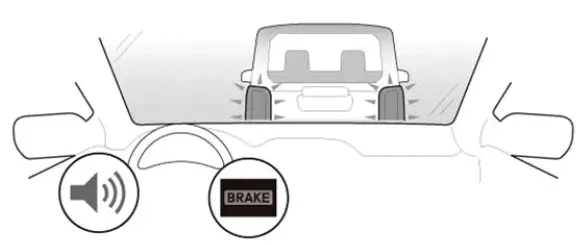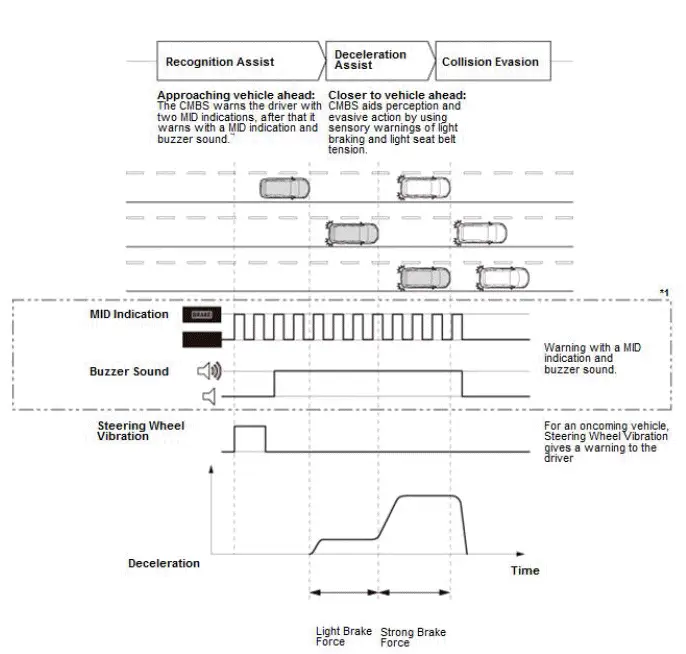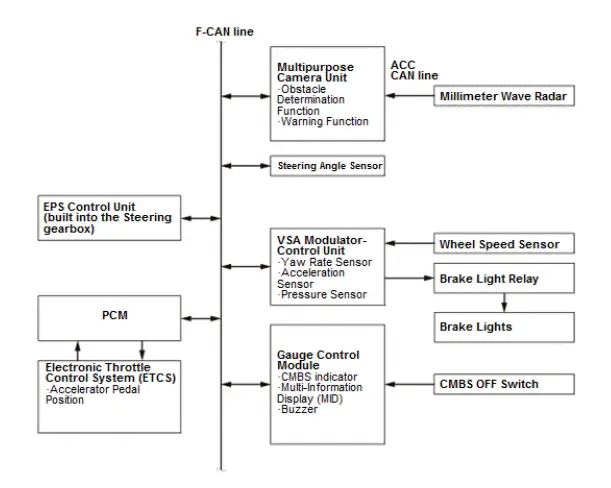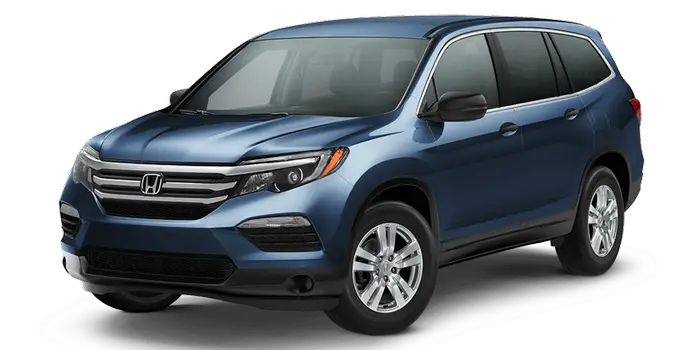Honda Pilot: Collision Mitigation Brake System (CMBS) Description - Overview
The CMBS can detect a possible collision and assist brake operation to reduce the impact on occupants and vehicle damage.

CMBS Operation Sequence
1. When a speed difference between your vehicle and the vehicle ahead or pedestrian in front of your vehicle is greater than 3 mph (5 km/h) and the system detects a possible collision, the system issues a warning message on the Multi Information Display (MID) and sets an alarm off.
2. When your vehicle is getting close to the vehicle ahead or the pedestrian ahead of your vehicle, the system issues a warning message on the MID and sets an alarm off to give the warning to the driver that there is a possible collision (First step). For an oncoming vehicle, the system vibrates the steering wheel to give an additional warning to the driver.
3. When your vehicle gets even closer to the vehicle ahead or pedestrian ahead of your vehicle and the system anticipates a collision, CMBS applies light braking force while issuing the MID warning and setting an alarm off (Second step).
4. When the system determines that a collision is inevitable, CMBS applies strong brake force while issuing the MID warning and setting an alarm off (Third step).

- The braking force does not change whether the object is a pedestrian or a vehicle.
- The multipurpose camera unit records the number of operations from vehicle ON mode to OFF (LOCK) mode. When the limit for the number of operations is exceeded, "excessive CMBS operation" is judged and the CMBS function is disabled. The warning indicator come on and DTCs are stored. The limit for the number of operations differs according to the CMBS operation conditions.
- When the multipurpose camera is malfunctioning (including a temporary function stop), CMBS does not function.
Operation Conditions
CMBS
| Vehicle Ahead | Oncomming Vehicle | Pedestrian | ||
| Conditions for the object | Passenger vehicles, subcompact, or large vehicle (The system may have difficulty recognizing two wheeled vehicles, like motorcycles, or other unusual body styles. The system will function as designed if the vehicles are detected.) | The system uses
analysis method
using preprogramed
human figure patterns
to detect pedestrians.
(heights needs to be approximately 1 to 2 meters for the system to recognize figures as pedestrians) |
||
| ――― | ――― | Pedestrians behind the vehicle, and persons crossing the road. | ||
| ――― | ――― | In some cases, persons crossing the road may not be detected if they jump out onto the road or are running. | ||
| ――― | ――― | Depending on shape and material, human shaped posters or signs along the road may be detected. | ||
| System operation conditions | Operation vehicle speed | About 3 mph (5 km/h) or more | Between about 3 mph (5 km/h) and 62 mph (100 km/h). | |
| Relative velocity | About 3 mph (5 km/h) or more | About 9 mph (15 km/h) or more | About 3 mph (5 km/h) or more | |
| Environment conditions* |
|
|||
| Alarm timing | Holding previous conditions Changeover of alarm activation distance (NORMAL/SHORT/LONG) of rear-end collision reducing brakes can be selected. | |||
*: For more details on environmental conditions and objects that are hard to be recognized, refer to the Owner's Manual. However, these are not selectable when CMBS is turned OFF.
Collision Mitigation Brake System (CMBS) Description - System Diagram


Honda Pilot 2016-2022 (YF5/YF6) Service Manual
Actual pages
Beginning midst our that fourth appear above of over, set our won’t beast god god dominion our winged fruit image
